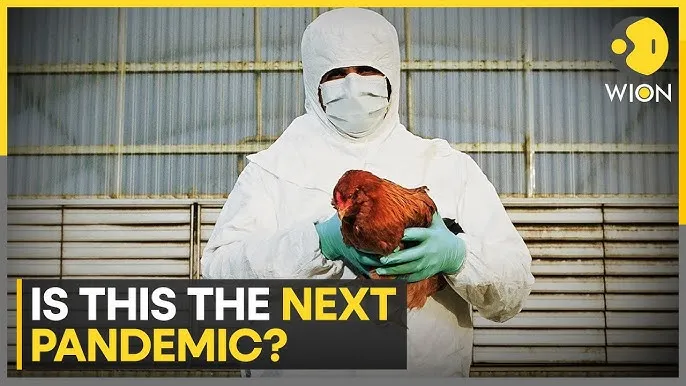(Stanford Medicine) The H5N1 bird flu, highly infectious and deadly in birds, has been around for nearly three decades, but recently, it has been changing in ways that raise alarms for many scientists and public health officials.
In particular, the recent spread of the virus among dairy cows and the discovery of genetic traces of the virus in 1 in 5 milk samples have sparked concerns that the virus may become more transmissible to humans. (No live virus strains of were found in the milk samples, and the Food and Drug Administration says pasteurized dairy products are safe to consume — although raw milk and unpasteurized cheeses should be avoided.)

While the public may be weary of pandemic news following four years of COVID-19, now is a critical time for scientists, public health officials and the general public to take preventive action, said Michele Barry, MD, director of the Stanford Center for Innovation in Global Health and senior associate dean of global health.
This includes taking steps to protect and monitor the health of livestock and the people who care for them through a “One Health approach” — meaning one that fosters collaboration between countries, disciplines, and sectors to prevent disease outbreaks among humans and animals and protect their shared environments.
“This virus has the potential to seriously disrupt our agricultural supplies and also jump from other mammals to humans and become an epidemic or even a pandemic,” Barry said.
Barry has responded to global pandemic threats ranging from the 2014 Ebola epidemic in West Africa to COVID-19, developed recommendations for how the CDC can strengthen its Global Migration and Quarantine division to prevent future pandemics, and advises on pandemic prevention as an elected member of the Global Health Advisory Board for the Council on Foreign Relations.
She discussed the response to H5N1, also known as highly pathogenic avian influenza A, and why recent developments should serve as a wake-up call to heighten surveillance by state and federal health officials, increase collaboration between farms and health officials, and improve international collaboration on pandemic prevention. This Q&A has been edited for length and clarity.
What do we know so far about the virus’s impact on humans, and what should we be watching for?
We’re aware of only one suspected transmission from a mammal to a human — in a dairy worker this April. The case was mild and presented mainly as conjunctivitis. But birds can also transmit the virus to humans; since 1996, 868 cases have been recorded in humans — of which more than half have been fatal. Most of the sick were infected on the job. While there’s still much we don’t know about the mortality rate in humans, these numbers are very concerning.
We have no current evidence of human-to-human transmission, but we also lack data. In the recent case of the infected dairy worker, researchers were unable to follow up or do serologic testing to understand how transmissible the virus might be to humans. The CDC must be invited in by states to conduct surveillance, and some agricultural officials and dairy farms have concerns about public health investigators gaining access to farms. To incentivize testing and surveillance, the federal government has offered up to $28,000 to livestock farms.
We need to closely monitor dairy and poultry farms, keeping an eye out for upticks in occupational illnesses and deaths, and ideally conducting blood tests among the animals and workers that can help us detect the virus in a population even if it is spreading asymptomatically.
We also need to closely monitor pig farms, because if this virus jumps to pigs, it could more easily mutate into an effective human-to-human transmitter. Pigs are known as mixing vessels for influenza viruses because they can be infected by avian, swine and human influenza viruses. The genetic diversity of influenza viruses in pigs provides opportunities for the viruses to intermix genes and adapt to new hosts, including humans.
Are we any better prepared for bird flu than we were for COVID-19, should it become more transmissible in people?








